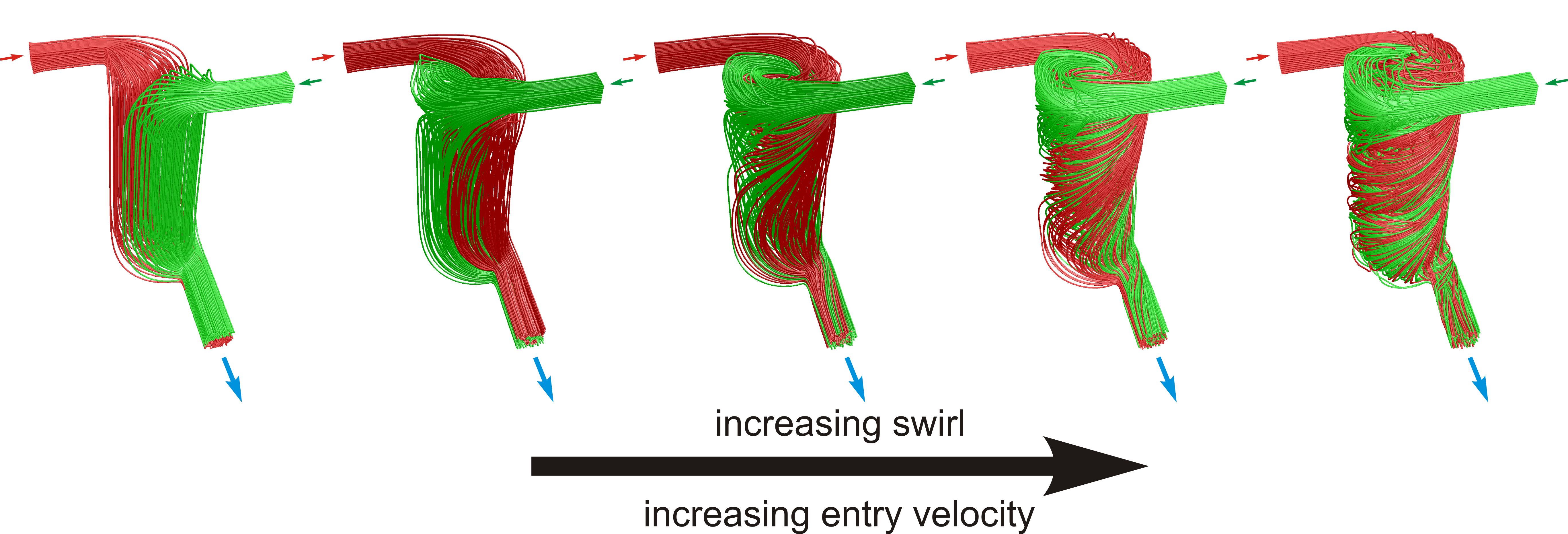Mixing in microstructured devices – clarified by CFD
Mixing is a very important step of the process technology. Its purpose is to increase product quality and conversion rate of chemical and/or biological reactions by fast homogenization of compounds and to accelerate mass and heat transfer.
CFD can be considered an important tool in the mixing technology. As a result of CFD calculations detailed information about velocity, temperature and species distributions can be obtained. With this knowledge mixers can be optimized and optimal operating conditions for the mixing process itself can be determined. Therefore, expensive mixer tests and parameter studies are reduced to a minimum.
 Figure 1: Development of swirling flow in a cyclone mixer as a function of entry velocity.
Figure 1: Development of swirling flow in a cyclone mixer as a function of entry velocity.Beside optimization and design purposes CFD is able to communicate essential understanding of the physical and chemical processes inside apparatuses, see Figure 1. It is shown that the swirling flow inside a cyclone mixer is increasing with increasing inlet velocity. The flow develops from pure streamline flow, with nearly no mixing, to laminar swirling flow, with very good mixing. As a result of CFD calculations the inlet velocity, at which swirling starts and mixing quality at the outlet can be determined, and the complex flow pattern inside the mixer can be visualized.
The unsteady mixing process of water and ethanol in a so called V-Mixer is shown in the following video clips.[video1, video2] The video clips display the velocity and species distribution within tow layers of the mixer. Ethanol and water flow v-shaped (90° to each other) at an angle of 45° in a vertical ashlar-formed mixing chamber. At the beginning of the mixing process the micro channels and the mixing chamber were filled with a mixture of 50% water and 50% ethanol (mass weighted). Since the inflow is very low, the effect of gravity is clearly visible. The lighter ethanol is accelerated when it enters the mixing chamber, the heavier water collects in the inlet region. Another finding of the simulations was, that the flow in the V-Mixer adopts a periodic behaviour.
